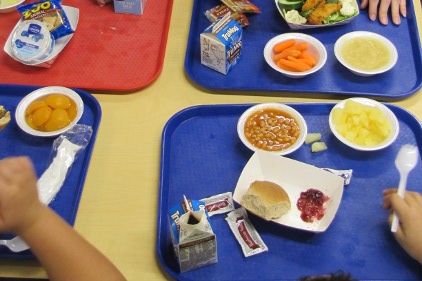The new standards for school meals announced Wednesday by First Lady Michelle Obama and Department of Agriculture Secretary Tom Vilsack standards for the first time in more than 15 years and are said to improve the health and nutrition of nearly 32 million children that participate in school meal programs every school day. Read the standards on the USDA website.
The Academy of Nutrition and Dietetics (formerly the American Dietetic Association), Chicago, said it “strongly supports” the new regulations.
Response from dairy industry groups also was positive. The National Milk Producers Federation, Arlington, Va., praised the updated school meal standards. In a statement, NMPF President and CEO Jerry Kozak said, “The updated nutrition standards require that low-fat or fat-free milk remain a part of every school meal. That’s essential, given that milk is the single largest contributor of nutrients in kids’ diets. A single glass of milk delivers a very affordable package of nine essential nutrients important to good health, including calcium, potassium, phosphorus, protein and vitamins A, D and B12.”
The International Dairy Foods Association, Washington, D.C. also commended the USDA “for highlighting the nutritional role that dairy products play.” Yet in its statement, IDFA “expressed concern that restrictions on flavored milk could reduce overall milk consumption in schools in favor of less healthy alternatives.”
Connie Tipton, IDFA president and CEO said, “We are disappointed that USDA has placed limits on milk varieties ahead of constraints on competing beverages widely available today.” Those beverages are juices, sports drinks and soda.
In an essay to be published in the February Dairy Foods, the director of food services of the Cincinnati Public Schools writes how she worked with processor Trauth Dairy (a Dean Foods brand) to formulate a lower-calorie, good-tasting chocolate milk. Jessica Shelly (shown in photo) writes:
“In March 2010, our school district was at a decision point. A new Ohio law slated for implementation by 2014 would require that all flavored milk sold in schools have 150 or fewer calories — our current flavored milk contained 180 calories. After internally reviewing multiple studies that outlined the decline of overall milk consumption with the removal of flavored milk, and consulting with our district’s health and wellness advisory committee, the city health department and our region’s nutrition council, we understood the importance of keeping a flavored-milk choice available at lunch. With almost 75% of our district’s students qualifying for free and reduced lunch, the dieticians and physicians of these groups were concerned about our students not getting the daily calcium, Vitamin D and other essential nutrients that milk provides.
“With the vision that we need a flavored milk that meets the new Ohio calorie requirement, we asked our milk supplier for a new formulation to meet the regulations. Without this, our alternative would be to pull all flavored milk from our district menus. Lucky for us, Trauth Dairy had its finger on the pulse of the new law and was working on a solution to lower the calories of flavored milk. It presented us with a new formulation. Trauth needed a school district willing to implement the new formulation and provide feedback on acceptance and improvement recommendation. Our two needs complimented each other and our district agreed to be the first school district in Ohio to serve their new product — a 150-calorie, 1% chocolate milk with reduced sugars and no high fructose corn syrup (HFCS). The new flavored milk would cost more, but that’s a small price to pay to ensure that students take and consume milk.
“From the first day of the school year, our students liked and accepted the new chocolate milk. In fact, our overall milk consumption increased from the previous school year. Additionally, parents were happy (the milk provides their children with needed nutrients), our Department of Education auditors were happy (we met the new regulations ahead of the implementation timeframe) and our Board was satisfied (we did it in a fiscally responsible way).” The entire essay will be online in mid-February.






